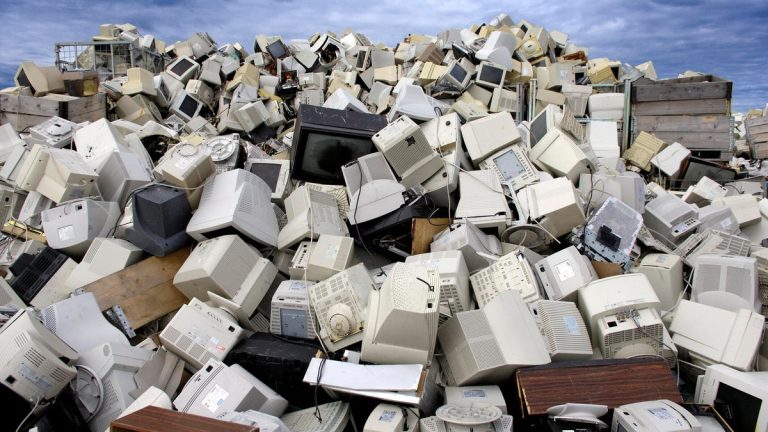
Electronic waste, or e-waste, has become a significant environmental concern due to its rapid growth and improper disposal. The improper handling of e-waste can have severe consequences for the environment and human health.

1. Pollution of Land and Water
- Landfills: When e-waste is dumped in landfills, it can leach hazardous substances into the soil and groundwater, contaminating water sources.
- Incineration: Incinerating e-waste releases toxic fumes and pollutants into the atmosphere, contributing to air pollution and acid rain.
- Open Dumping: Illegal dumping of e-waste in open areas can lead to the release of harmful chemicals into the environment.
2. Release of Hazardous Substances
- Heavy Metals: E-waste contains a variety of heavy metals, including lead, mercury, cadmium, and arsenic, which are highly toxic to humans and the environment.
- Persistent Organic Pollutants (POPs): E-waste components such as printed circuit boards and monitors can contain POPs, which are persistent pollutants that accumulate in the food chain and pose serious health risks.
- Greenhouse Gases: The production, transportation, and disposal of e-waste contribute to greenhouse gas emissions, contributing to climate change.
3. Resource Depletion
- Finite Resources: The extraction of raw materials used in electronic devices, such as metals and minerals, can deplete natural resources.
- Energy Consumption: The production and disposal of e-waste require significant amounts of energy, contributing to energy consumption and greenhouse gas emissions.
4. Health Risks
- Exposure to Toxic Substances: Exposure to hazardous substances in e-waste can cause a variety of health problems, including respiratory issues, neurological disorders, and cancer.
- Child Labor: E-waste recycling often involves hazardous working conditions, including child labor, which can lead to serious health risks.
5. Global E-Waste Trade
- Illegal Export: Many developed countries illegally export e-waste to developing countries with weaker environmental regulations.
- Hazardous Working Conditions: In developing countries, e-waste recycling is often carried out in informal and unregulated settings, exposing workers to hazardous conditions.
6. Impact on Wildlife
- Habitat Destruction: E-waste dumping can destroy habitats and harm wildlife.
- Ingestion of Toxic Substances: Wildlife may mistake e-waste components for food and ingest harmful substances.
Addressing the environmental impacts of e-waste requires a comprehensive approach that involves proper collection, recycling, and disposal practices. Governments, industries, and individuals must work together to promote sustainable consumption and reduce the generation of e-waste. Additionally, investments in research and development are needed to develop innovative recycling technologies and reduce the environmental footprint of electronic devices.
read more : The Health Risks of E-Waste: A Growing Concern



